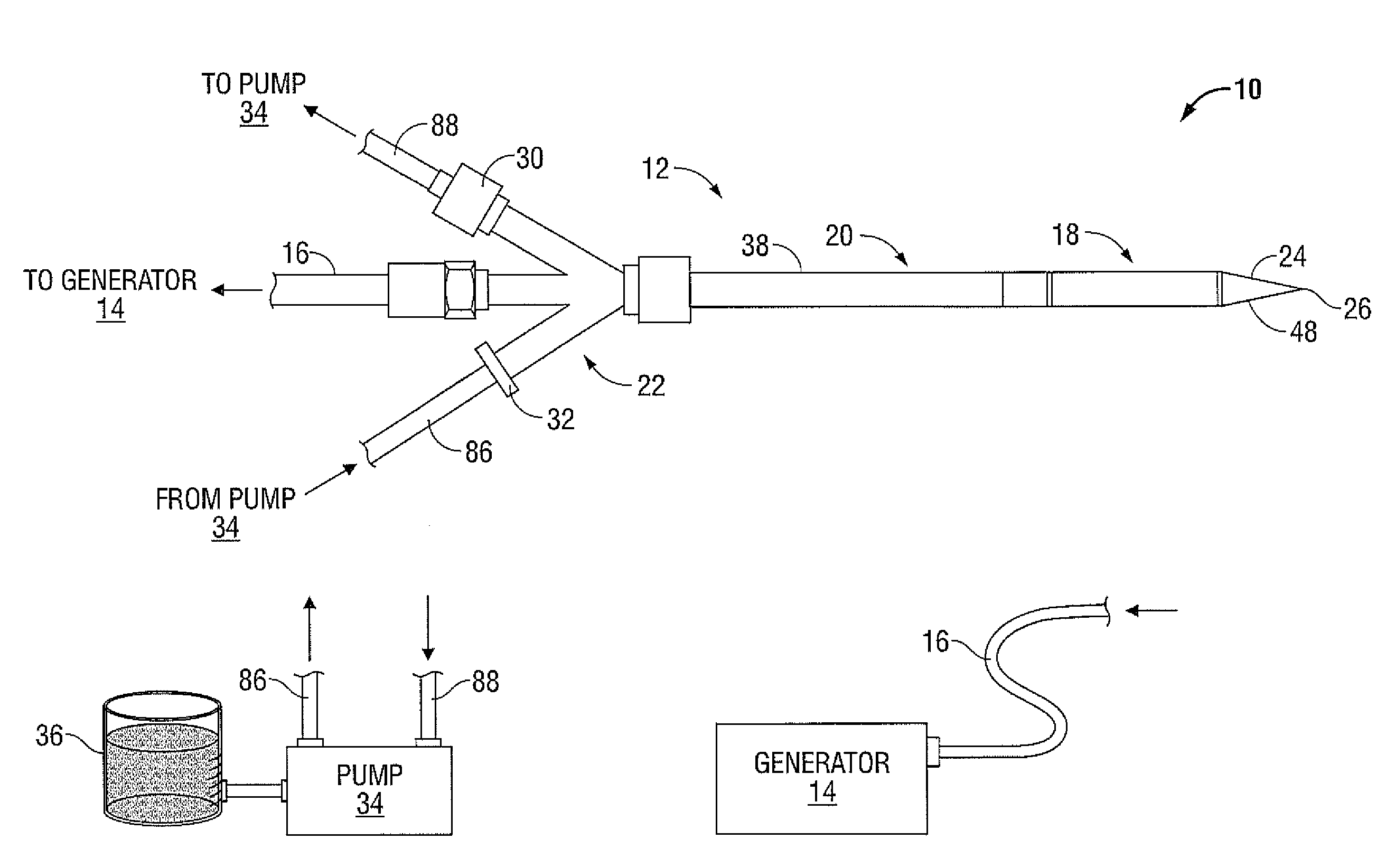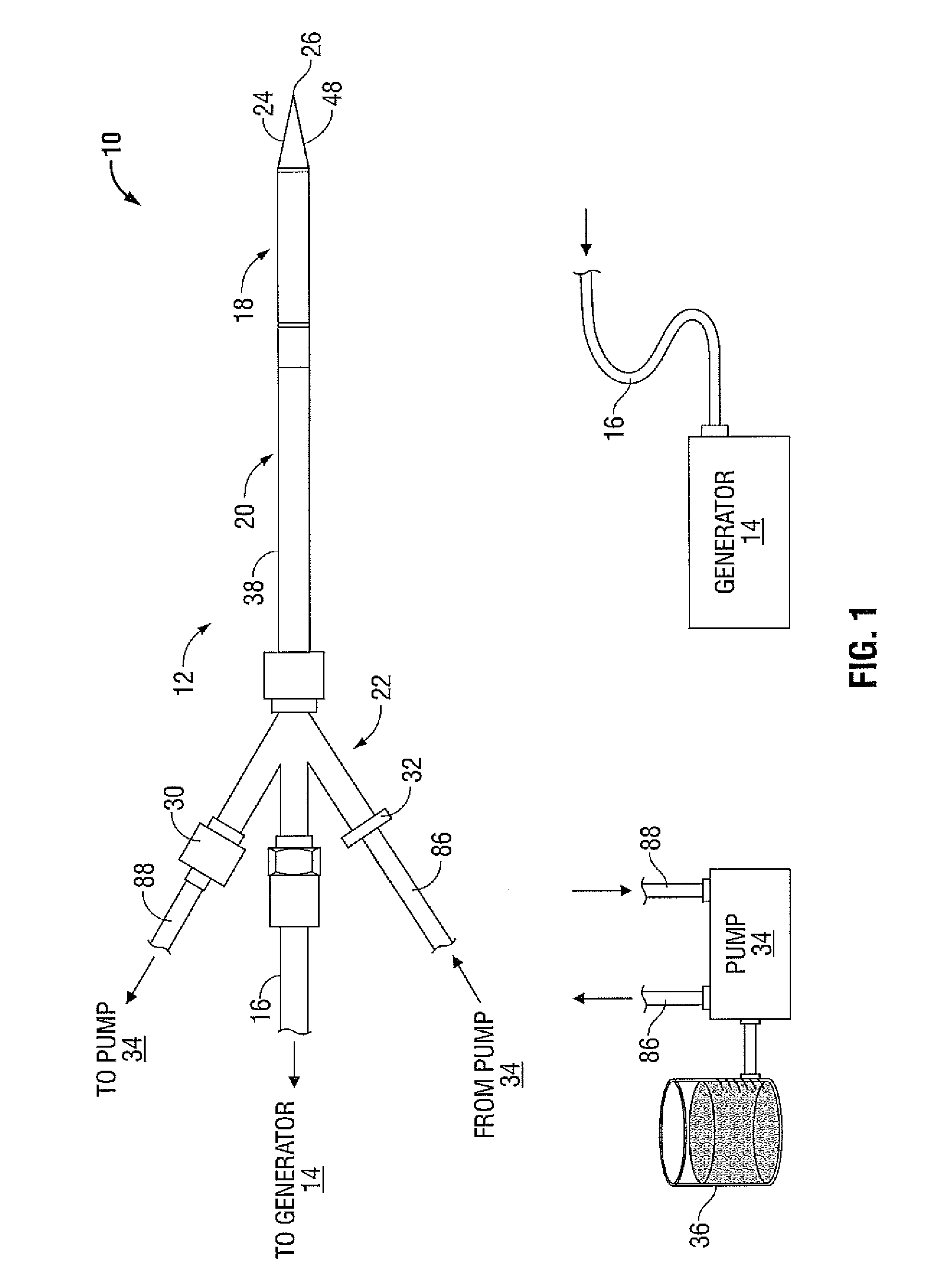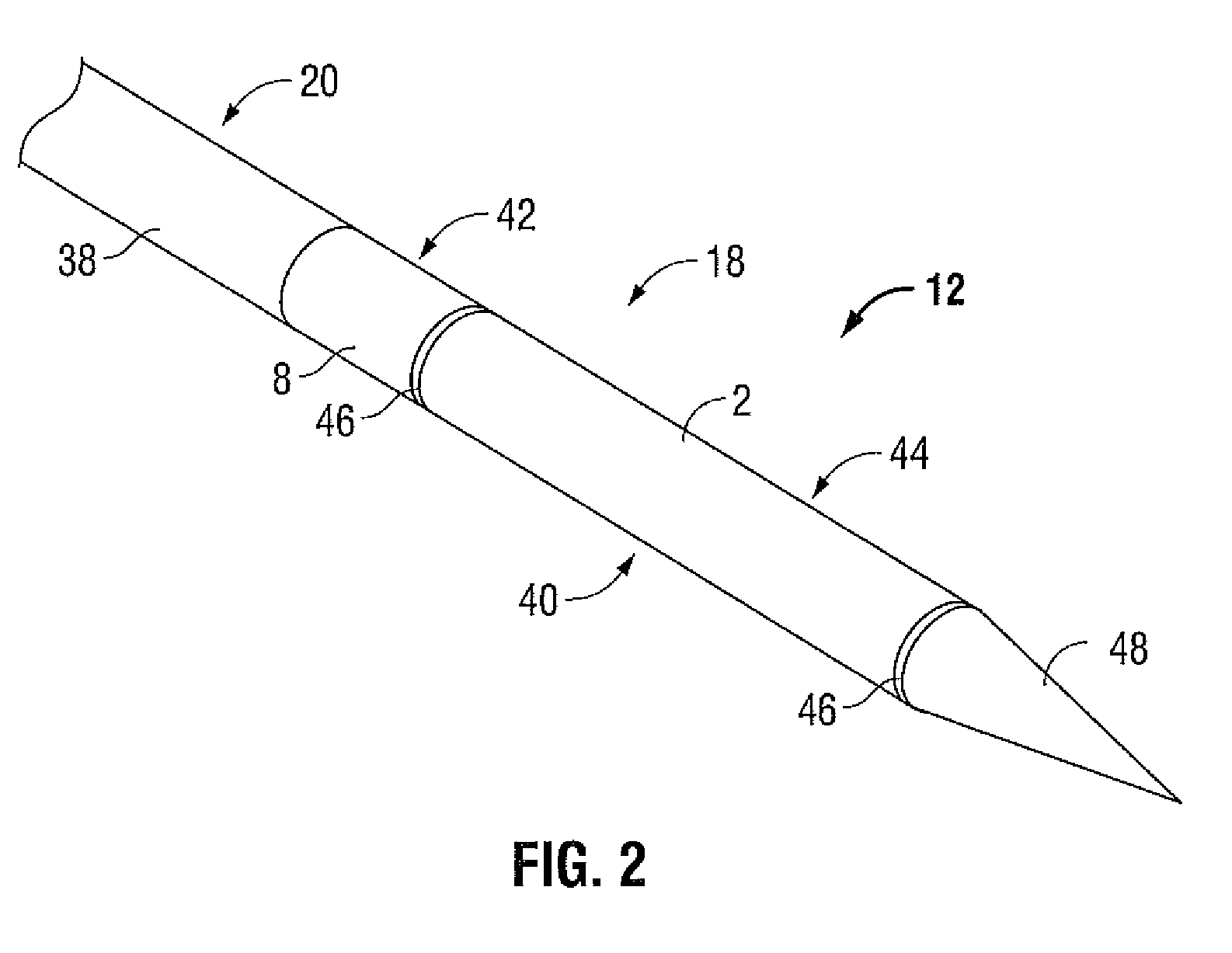Method for Constructing a Dipole Antenna
a dipole antenna and antenna body technology, applied in the field of microwave applicators, can solve the problems of difficult to reach and treat many types of malignancies, difficult to achieve thermal damage to most types of normal cells, non-invasive techniques, etc., and achieve the effect of preventing mechanical failure of the distal portion, high strength and constant antenna efficiency
- Summary
- Abstract
- Description
- Claims
- Application Information
AI Technical Summary
Benefits of technology
Problems solved by technology
Method used
Image
Examples
Embodiment Construction
[0023]Particular embodiments of the present disclosure will be described herein below with reference to the accompanying drawings. In the following description, well-known functions or constructions are not described in detail to avoid obscuring the present disclosure in unnecessary detail.
[0024]FIG. 1 shows a microwave ablation system 10 that includes a microwave antenna assembly 12 coupled to a microwave generator 14 via a flexible coaxial cable 16. The microwave antenna assembly 12 may be a dipole antenna of 1.6 cm in length. In order to ablate small tumors, microwave antenna assembly 12 has a Short Radiating Section (SRS). The microwave antenna assembly 12 is capable of reducing the antenna length to one-quarter of the wavelength length required, effectively using half the length of the half wave length dipole antenna. The generator 14 is configured to provide microwave energy at an operational frequency from about 500 MHz to about 5000 MHz.
[0025]Antenna assembly 12 is generally...
PUM
| Property | Measurement | Unit |
|---|---|---|
| dielectric constant | aaaaa | aaaaa |
| temperatures | aaaaa | aaaaa |
| threshold temperature | aaaaa | aaaaa |
Abstract
Description
Claims
Application Information
 Login to View More
Login to View More - R&D
- Intellectual Property
- Life Sciences
- Materials
- Tech Scout
- Unparalleled Data Quality
- Higher Quality Content
- 60% Fewer Hallucinations
Browse by: Latest US Patents, China's latest patents, Technical Efficacy Thesaurus, Application Domain, Technology Topic, Popular Technical Reports.
© 2025 PatSnap. All rights reserved.Legal|Privacy policy|Modern Slavery Act Transparency Statement|Sitemap|About US| Contact US: help@patsnap.com



